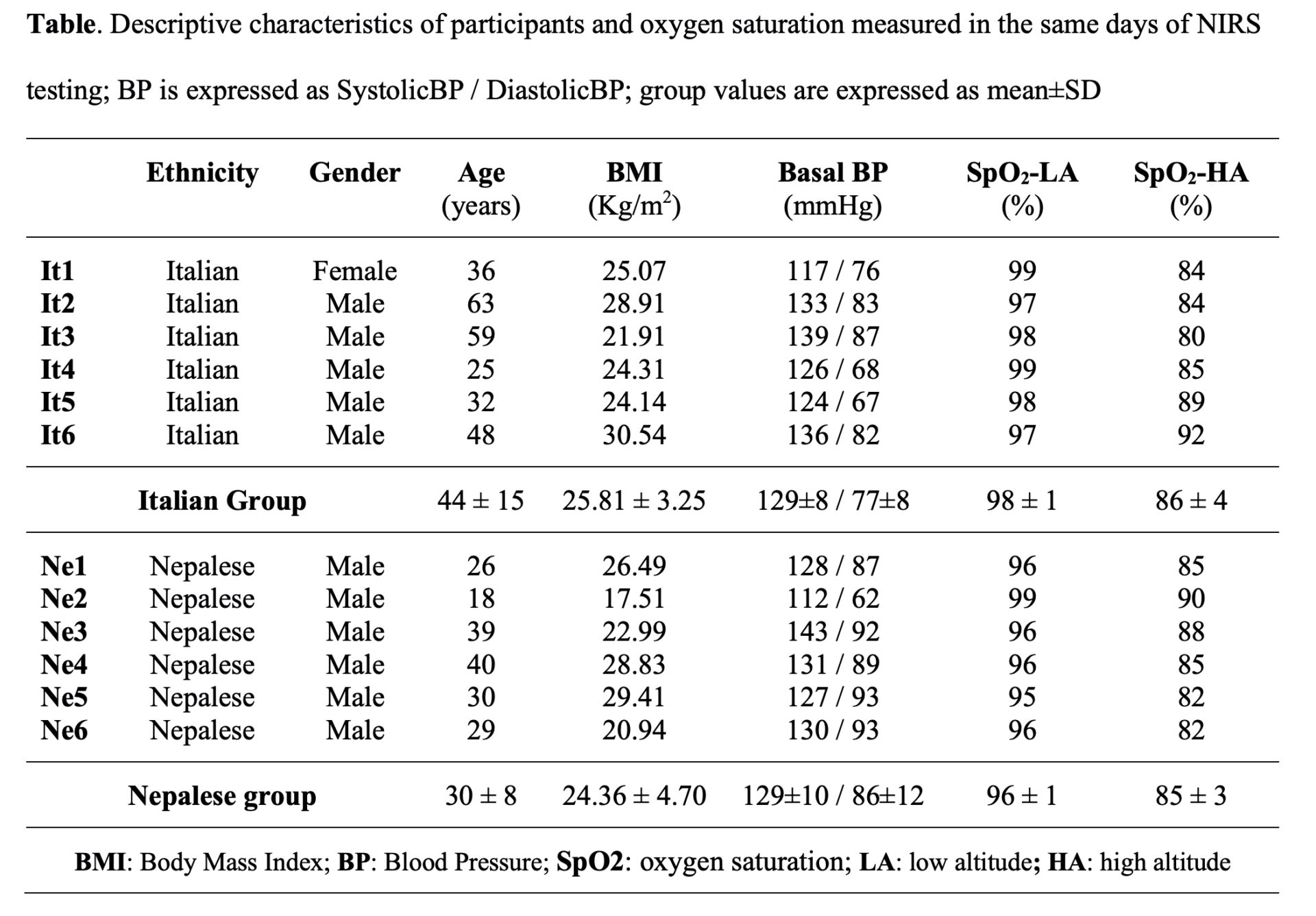Altitude traveling represents an intriguing experimental model to reproduce physiological and pathophysiological conditions sharing hypoxemia as the denominator, as ageing [1]. Moreover, traveling to high altitude is nowadays very popular, and it appears necessary to provide medical advice in terms of altitude tolerance and acclimatization [2]. The main aim of this study was to investigate oxygen delivery and utilization in response to hypobaric hypoxia and to a submaximal strength exercise, taking into account several factors including muscle group and ethnic origin. As part of the “Kanchenjunga Exploration & Physiology” project, 6 Italian trekkers and 6 Nepalese porters took part in a high-altitude trek in the Himalayas. The measurement was carried out at low (1450 m) and high altitude (4780 m). NIRS-derived parameters (Tot-Hb and TSI) were gathered at rest and after a 3-minutes submaximal resistive exercise, both in quadriceps and forearm muscles. Peripheral saturation (SpO2), starting from physiological values, decreased from low to high altitude in all the participants (percentage of oxygenated haemoglobin moved from 98±1 to 86±4 in the Italian group, and from 96±1% to 85±3 percent of saturation, in the Nepalese group; F1,10=122.50, p<.001, partial η2=.925), confirming the typical response to high altitude ascents. TSI decreased with altitude, particularly in forearm muscles (from 66.9% to 57.3%), whereas this decrement was less evident in quadriceps (from 62.5% to 57.2%); Nepalese porters had greater values in thigh saturation than Italian trekkers. Tot-Hb was increased after exercise. At altitude, it seemed that this increase was particularly high in quadriceps. The response of diverse muscles to hypoxia, or to hypoxic exercise [3], deserves to be further explored basing of morpho-functional characterization of muscle groups. High altitude may represent a stressor to the oxygen system, capable of entailing beneficial effects in oxygen delivery and utilization: we argue about the long-term adaptive memory due to the frequent exposure to altitude. We further suggest a long-term adaptation of the Nepalese porters due to improved oxygenation in those muscles involved in a hypoxic exercise, possibly through increasing muscle blood flow. Individual factors, such as age, gender, altitude exposure time, and muscle structure should be taken into account in further investigations on oxygen delivery and utilization in altitude.
Future Physiology 2020 (Virutal) (2020) Proc Physiol Soc 46, PC0101
Poster Communications: Skeletal muscle oxygen delivery in response to an altitude hypoxia trekking: muscle group and ethnic origin on point
Danilo Bondi1, Vittore Verratti1, Gabriele Mulliri2, Giovanna Ghiani2, Tiziana Pietrangelo1, Antonio Crisafulli2
1 University "G. d'Annunzio" of Chieti - Pescara, Chieti, Italy 2 University of Cagliari, Cagliari, Italy
View other abstracts by:
Where applicable, experiments conform with Society ethical requirements.

